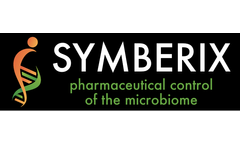Drug Metabolism Articles & Analysis: Older
24 articles found
Pharmacokinetics (PK) and Toxicokinetics (TK) studies are virtues of a broader scientific discipline called pharmacology. PK focuses on the journey of drugs through the body, revealing the trajectory of drug absorption, distribution, metabolism, and excretion, collectively known as ADMET. ...
The result can be used to guide the screening and development of drugs, and support the evaluation of their safety and the design of clinical drug delivery protocol. Pharmacokinetic characteristics are composed of and determined by drug absorption, distribution, metabolism and excretion. The structure, physiological properties ...
However, tumors are heterogeneous, and each tumor has its own metabolic characteristics. Even different tumor cells within the same tumor differ in their metabolic patterns. ...
One critical element in the drug development process is drug metabolism and pharmacokinetics (DMPK), which refers to how a drug is absorbed, distributed, metabolized, and excreted (ADME) from the body. In vitro DMPK services, along with absorption, distribution, metabolism, excretion, and ...
This process occurs in plants through photosynthesis and in animals through various metabolic pathways. The synthesis of carbohydrates involves a series of enzymatic reactions that convert simple molecules into more complex structures. ...
Hepatocytes are the chief functional cells of the liver, responsible for the selective uptake, metabolism and excretion of most drugs. Cells for use in plate cultures or suspension assays represent a key tool for predicting properties such as hepatotoxicity, metabolism, and potential drug-drug interactions. Since ...
The most reliable way to detect HP is to use this non-invasive 13C-UBT method, which can infer H. pylori in the stomach by detecting the 13C/12C isotope ratio in the exhaled gas after oral administration of 13C-urea. Drug Metabolism Study The study of drug metabolism in the body is a very critical process for the development of ...
There are multiple metabolic disease models developed to assist in studying these complex disorders. For instance, diet-induced obesity (DIO) models help understand obesity and related metabolic disorders. Similarly, genetically engineered mouse models provide insight into the role of specific genes in metabolic diseases. In vitro cell culture ...
One critical element in the drug development process is drug metabolism and pharmacokinetics (DMPK), which refers to how a drug is absorbed, distributed, metabolized, and excreted (ADME) from the body. In vitro DMPK services, along with absorption, distribution, metabolism, excretion, and ...
Firstly, they provide information on drug absorption, distribution, metabolism, and elimination, which are crucial for determining appropriate dosages and treatment regimens in humans. ...
Drug-to-antibody ratio (DAR, drug-to-antibody ratio) The number of cytotoxic drugs connected to each antibody is the drug-to-antibody ratio (DAR). When the DAR increases, the drug metabolism rate of ADC drugs increases, the half-life decreases, and the systemic toxicity ...
Alucent Biomedical Inc. is rethinking peripheral artery disease (PAD) treatment with a novel natural scaffolding technology based on a light-activated drug therapy delivered via a balloon catheter. This first-of-its-kind drug-device therapy, known as Natural Vascular Scaffolding (AlucentNVS), is designed to provide a more natural and effective way of establishing ...
CYP450 and Biosynthesis CYP450 involved in drug metabolism mainly includes seven important subtypes of CYP1, CYP2, and CPY3 families, especially CPY3A4. CYP3 family accounts for 28.8% of the total intrahepatic CYP450, which is an important enzyme involved in the first-pass effect of oral drugs. Many opioid analgesics can be ...
Pharmacogenetics and pharmacogenomics have now expanded from purely human genetic studies to the study of potential mechanisms of human gut microbes on drug efficacy. Bidirectional Effects Through years of research, it has been revealed that intestinal flora can synthesize a range of enzymes involved in drug metabolism, including oxidases and ...
Combined with the sequencing analysis technology of intestinal bacteria, a key strategy for studying the relationship between intestinal flora and disease, intestinal flora and drug metabolism/pharmacodynamics, is formed. The gut microbiota is increasingly recognized as important drug targets. ...
Biocatalysis involves using natural substances, such as enzymes, from biological sources or entire cells which make chemical reactions more rapid. Enzymes are a critical element in the catalysis of a large number of reactions. This includes the production of alcohol from fermentation and the production of cheese by the breakdown of milk proteins. Many biocatalytic processes have been implemented ...
The liver plays an incredibly important role in the human body by metabolizing drugs and other compounds. Developing accurate in vitro liver models to study is a critical step in better understanding the biological dynamics of our bodies and removing our dependence on animal models. ...
Durham, NC (April 28, 2020) - A review article published in PNAS highlights Symberix's efforts to understand the role of the human microbiota in drug efficacy and toxicity. Symberix co-founder Matt Redinbo is featured in the article alongside other leaders from the emerging field of “pharmacomicrobiomics” -- the study of mechanisms behind the microbial impact on ...
Durham, NC (February 3, 2020) - An article in Nature highlights Symberix's efforts to understand the complex relationship between drugs and the microbiome. The paper discusses recent contributions to the emerging field of “pharmacomicrobiomics” -- the study of how microbes impact drug disposition, efficacy, and toxicity. Symberix is developing ...
Parametric analysis of gene set enrichment revealed an important increase in the expression of genes related to drug metabolism and transport, liver metabolism, xenobiotic clearance, and xenobiotic metabolism after DMP and DCHP treatments, while these responses were less pronounced with MMP (the metabolite of DMP). ...










